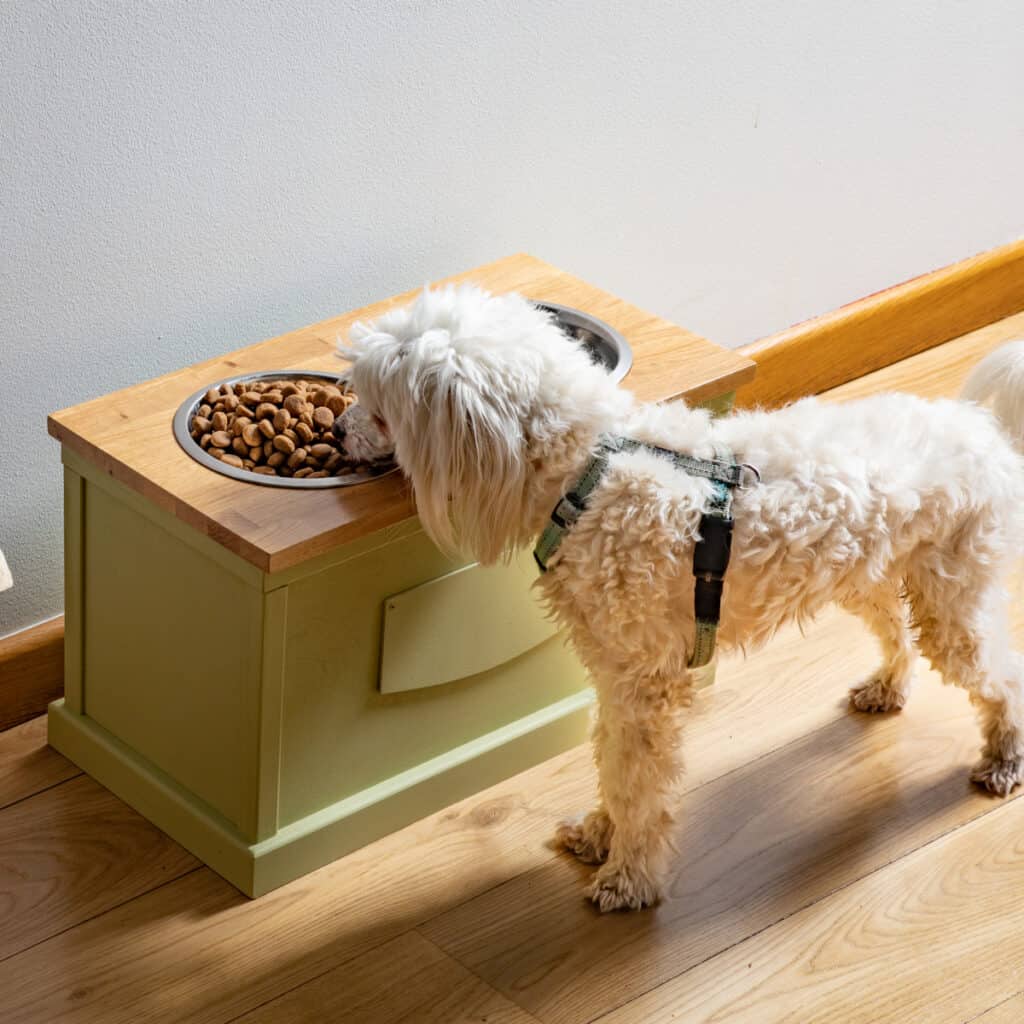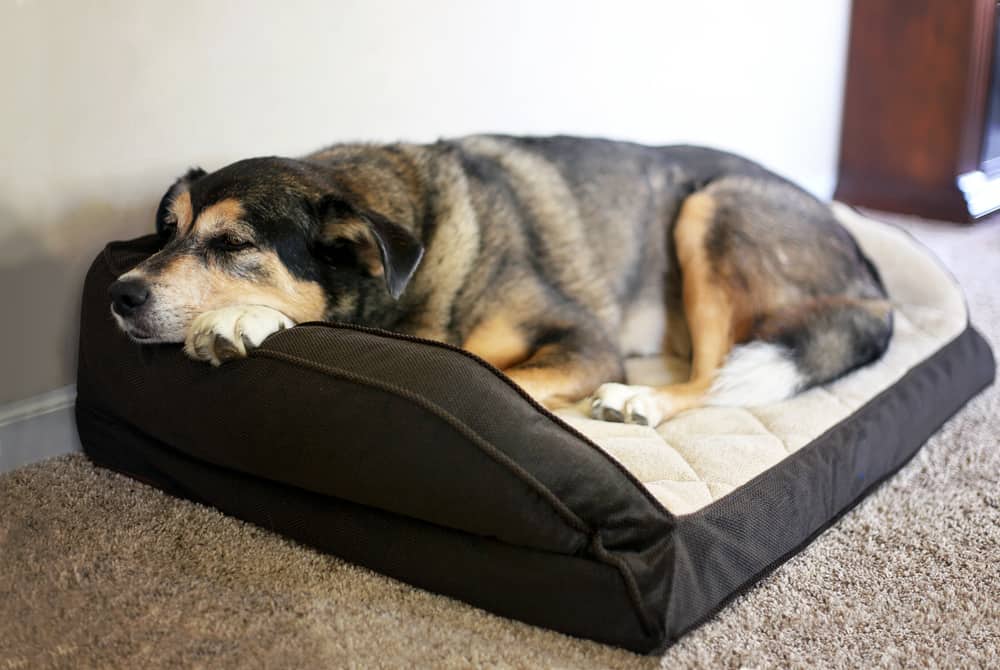Contents
All products and services on Project PAWS are independently selected by our editors, contributors, and veterinary experts. This post contains affiliate links. As an Amazon Associate I earn from qualifying purchases.To learn more, view my disclosure policy.
Last Updated on October 29, 2020 by Aimee
How to Diagnose and Treat Arthritis in Dogs: One of the most common disease processes that can occur in dogs as they get older is arthritis of the joints, just like what can happen in people. With age, normal joint fluid that keeps your dog’s joints healthy and lubricated gets thinner, causing bones to rub on bones. With time, this can cause significant discomfort, pain, and difficulty getting around because of all of the inflammation that is produced within the joints. As our dogs start to live healthier, longer lives, unfortunately arthritis can sometimes become severe enough that it can impact their quality of life. Fortunately, there are various medications and therapies we can use to help alleviate some of their discomfort, which we will discuss below.
Diagnosing Arthritis
Arthritis is often diagnosed by your veterinarian doing a physical exam on your dog, watching your dog walk around, and listening to your description of your dog’s mobility and activity level at home. Your veterinarian may say that your dog’s hips or knees feel stiff and have “decreased range of motion”. This means that your dog’s joints can’t bend and stretch as easily or as far as they should be able to. Your veterinarian may also hear clicking or “crepitus” in your dog’s joints when they manipulate them. This is the sound of the bone rubbing against bone. You may even hear it sometimes when your dog is walking or standing up from a sitting position.
Signs of arthritis in your dog you may notice at home:
- Difficulty standing up from lying or sitting down or taking longer to stand up
- Taking longer to sit down
- Trying to avoid stairs or slippery surfaces; hesitation around stairs
- Decreased appetite
- Lethargy, tiredness
- Not as active or doing the things they usually like doing
- Intermittent limping or slightly favoring one or multiple legs
- Behavior changes, such as being grumpier than usual or even acting like they will bite
Sometimes the first sign of arthritis in dogs is a behavior change. They may feel discomfort when being pet in a certain way and they may thus begin to anticipate pain. This can sometimes manifest with them growling or even biting, even when they may have never growled or bitten anyone in their life.
Even though arthritis can usually be diagnosed by history and physical exam alone, it is often preferred to also take an x-ray of your dog’s joints to make sure there isn’t something else going on causing your dog’s problems. Cancer can also affect the bones and joints of older dogs, and taking an x-ray can help rule this out since it can sometimes mimic signs of arthritis.
Treatment & Management of Arthritis
There is no cure for arthritis. However, it can be managed with a combination of different strategies which may include supplements, pain medications, and physical and holistic therapies. The primary goal is to maintain your pet’s quality of life and to make sure their pain is addressed.
One of the best ways to decrease the effect of arthritis on your dog’s life is to keep your dog at a good, healthy weight and body condition. Arthritis is much more painful and difficult to manage in overweight and obese dogs. It is also more difficult for you to physically help them get up and move around if they are overweight.
Your veterinarian may recommend a combination of items from the following categories as ways to help maintain your pet’s quality of life and manage their arthritis:
Joint Supplements:
- Glucosamine and Chondroitin Sulfate
- Omega-3 Fatty Acids
- Glycosaminoglycan Injections
Joint supplements are typically safe medications that contain items healthy for your dog’s joints. Glucosamine and Chondroitin Sulfate are naturally in joint fluid, but are drastically reduced in dogs with arthritis, while Omega-3 Fatty Acids help decrease inflammation. Glycosaminoglycans are also in natural, healthy joint fluid to help with lubrication, but are missing in dogs with arthritis. Giving your dog supplements with these things in them can help prolong what is left of their joint fluid and supplement their joints with what they are missing, if even just a little bit.
Pain Medications:
- Anti-inflammatories
- Gabapentin or Opiate-like Medications
Your veterinarian may recommend starting your dog on anti-inflammatory pain medications. These medications are extremely helpful in dogs with arthritis, as they can drastically help decrease the inflammation and pain they are feeling in their joints. Most of these medications are metabolized through the liver and can have effects on the kidneys, so your veterinarian will likely want to check bloodwork prior to starting these medications to make sure they are safe for your dog. Oftentimes, after starting one of these medications, you will notice moderate and significant improvement in your dog’s comfort level and ability to move around. If your dog needs additional pain medication to provide enough comfort, or if your dog is unable to take an anti-inflammatory pain medication, your veterinarian may prescribe them opiate-like pain medications which are safer on their liver and kidneys, or a pain medication called Gabapentin.
Physical and Holistic Therapy:
- Therapeutic Massage
- Chiropractic Medicine
- Acupuncture
- Laser Therapy
- Underwater Treadmill
- Range of Motion Exercises
Physical therapy and the other listed holistic therapies can be extremely helpful for dogs with arthritis. These modalities can help not only with the pain, but also with muscle strengthening and balance, which is very important for dogs with arthritis. These therapies can work hand-in-hand with the medications to help drastically improve your dog’s quality of life if they are suffering from arthritis and its repercussions.
How to Diagnose and Treat Arthritis in Dogs
Changes in the Home
Other things that can be helpful for your dog at home are making sure there are rugs over hardwood or slippery floors, since they may have difficulty with balance or gaining traction with their feet and toenails. If at all possible, keeping their food and water in a place they can get to without having to walk on slippery floors can also help them out a great deal in maintaining nutrition and hydration.

Providing your dog with an easily accessible, soft and comfortable bed is also beneficial. Dogs with arthritis who tend to lie around for most of the day can start to develop pressure sores over their joints. These can be very difficult to heal and can become a source of infection.
It’s important to make sure the bed is in an area of the house where there is much activity so your dog still feels like they are a part of the family. Otherwise, they may forgo lying in it in order to be near you.

Finally, if there are stairs they have to go up or down to go outside to urinate or defecate, placing an easily accessible ramp for them to walk down beside or over the stairs can help make it easier for them. This can also help decrease the risk of them electing to just urinate or defecate inside.
Having a dog with arthritis can definitely become a challenging feat for everyone in the home. However, addressing your dog’s pain and making some adjustments in the home can help maintain their quality of life and make it more manageable for you as well.
Edited by Aimee Stock.

